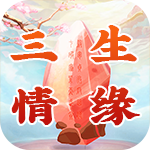1. 求10句英語夸張句
以下句子為英語地道習語,均含夸張成分。
1,She eats like a bird.(她食量很小——夸大為“吃得像小鳥一樣少”。)
2,He worked his fingers to the bones.(他拼老命地去工作。——夸張到“把他的手指磨損得露出了骨頭”。)
3,This movie is for the birds.(這部電影無聊透頂了——夸張地說可以“把它拿去喂鳥了”。)
4,The loud music almost drive me up a wall!(那吵鬧的音樂快把我逼瘋了!——夸張到“把我逼到墻上去躲都沒辦法”。)
5,Everybody bent over backwards to help him.(大家極盡一切力量去幫助他。——都到了“累翻過來的地步;鞠躬盡瘁了”)
6,His father hit the ceiling to know of her bad grades.(他父親聽說了她的差成績,暴跳如雷。——生氣得“跳起來撞到了天花板”。)
7,He lost his shirt at the races.(他賭馬輸了一大筆錢。——夸張說他“連身上的襯衫都輸掉了”,比喻輸了很多錢。)
8,She was really dressed to the teeth at the party.(她在舞會上穿得真是豪華。——夸張說她“連牙齒都盛裝到了”。)
9,We painted the town red on National Day.(國慶節我們開懷狂歡。——狂歡到“把整個鎮都漆成了一片紅色的海洋”還不夸張?)
10,I feel that I have the world by the tail .(我感到無比快樂。——都“拎起世界把它的尾巴提溜在手里”為所欲為了,這份滿足感也真夠夸張的了。)
2. 修辭手法中的"設問"用英語怎麼說
rhetoric question(設問) 附: 英語修辭 英語的修辭可以分為消極修辭和積極修辭兩大類。
一、消極修辭(Passive Rhetoric Techniques) 它主要指那些沒有相對固定格式的修辭性寫作技巧,它與語法、語言結構和詞匯的關系密切,只是為了修辭和立意新穎的緣故,對之做了一些調整。舉一種情況進行說明:為了增加文采,強化文章的表現力,常常避免重復使用同一個詞匯,而另選他詞。
這種無固定格式可循的消極修辭手段被稱為Elegant Variation(求雅換詞)。如在Elizabeth Razzi寫的題為10 Ways to Lose Pounds 的文章中,“減肥”的表達竟有8種,文筆活潑,文采燦然:1. Try to shed a few extra pounds? 2. Studies show these efforts may shave off the pounds quickly. 3. Here are ten simple strategies that can help melt away your fat forever. 4. …like a logical way to peel off a few pounds. 5. …roughly the amount needed to burn off one pound. 6. You must eat less to lose weight. 7. A key obstacle to dropping extra pounds is after-dinner snacking. 8. 10 Ways to Lose Pounds. 以上8句中的斜體字讓我們欣賞了英語詞匯的活力與風采。
遺憾的是,大部分精彩的用詞不能直譯。 求雅換詞的手法之一是大字小用,或小詞大用。
如:Don't take the low-fat label as a license to eat. 句子寫得精彩,最難忘的是其中license一詞。它是用途很廣的大詞。
用在這里給人一種“頭小帽大”的感覺,新穎別致。譯文很難挽留此韻。
(不能因為食品標明低脂肪,而敞開食用。)再如:If the term sounds unscientific to 20th-century ears, let us remember there is a definite connection between marshy lands and malaria… (如果這個術語對生活在20世紀的人聽來不科學的話,那就讓我們記住在沼澤地和瘧疾之間有一定的聯系……)。
求雅換詞的手法之二是科技詞匯和日常用詞的“錯位”。如:Na?ve rats and frogs are said to have reacted wildly to such proposed experimented situation. Na?ve用于現代生物學時的含義為:not previously subjected to experimentation or a particular experimented situation.(據說,首次用來作實驗的鼠和蛙對這種設定的環境改變都有劇烈反應。)
再如:However, there are plenty of people who like tennis. It is the megagame. Mega的含義是兆,百萬,是一個科技英語的詞綴。使用在這里新義溢出。
(但是許許多多的人喜歡網球,這是一項十分普及的運動。) 二、積極修辭(Active Rhetoric Techniques) 它主要指那些有相對固定格式的修辭性寫作技巧。
常見分類如下: 1. 詞義修辭格(Lexical Stylistic Devices) metaphor(比喻), metonymy(借代), personification(擬人), irony(反語), hyper***(夸張), understatement(低調), euphemism(委婉語), contrast(對照), oxymoron(矛盾修辭法), transferred epithet(移就), pun(雙關), syllepsis(異敘), zeugma(粘連), parody(仿擬), paradox(雋語) 2. 結構修辭格(Syntactical Stylistic Devices) repetition(反復), catchword repetition(聯珠), chiasmus(回文), parallelism(平行結構), antithesis(反對), rhetoric question(設問), anticlimax(突降) 3. 音韻修辭格(Phonetic Stylistic Devices) alliteration(頭韻), onomatopoeia(擬聲) 三、英語修辭的理解與翻譯 馬克?吐溫在其著名游記A Tramp Abroad中,有這樣一句:We had plenty of company in the way of wagon-loads and mule-loads of tourists------and dust. 句末的-----and dust看似尋常一筆,其實是一種不可多得的妙句,使用了英語中anticlimax的修辭格。如果不能識破,則讓對照閱讀原文者“飲恨”。
如:同路的有許多旅客,有乘馬車的,也有騎騾子的——一路塵土飛揚。/ 我們的旅伴真不少,有乘馬車的,有騎騾子的,還有滾滾塵土呢。
下面就幾種常見的修辭格進行講解: 1. Parody(仿擬)如果譯者功底不凡,能知作者之所“仿”,那麼,理解與翻譯也就“水到渠成”。如:Clearly, when it comes to marriage, practicing beforehand doesn't make perfect. 可以譯成:顯然,在婚姻問題上,婚前同居并不能令婚姻生活趨于完美。
再如:When flu hits below the belt, it can be a challenge to keep down anything more nourishing than tea and water. 詞典對成語hits below the belt的通常解釋是:用不正當手段打人(原指拳擊中打對方的下身)。若是照搬,譯文就會鬧笑話。
對待“仿擬”修辭格的方法之一是還原。所謂還原,即故意撇開成語的引申義,而“硬”用其字面義。
如:若流感影響到了腸胃,那就只能飲用點茶水,要吃下其他東西就非常困難了。再如:Little John was born with a silver spoon in a mouth, which was rather curly and large. 英語成語to be born with a silver spoon in one's mouth的含義是“出生在富貴之家”。
這里,作者不用此引申義,而用字面意思。試譯:小約翰嘴形彎曲,且大得出奇,好像生下來的時候嘴中含了一把銀勺子似的。
2. Syllepsis(異敘)此修辭格的特點是用一個詞(動詞、形容詞或介詞)同時。


















